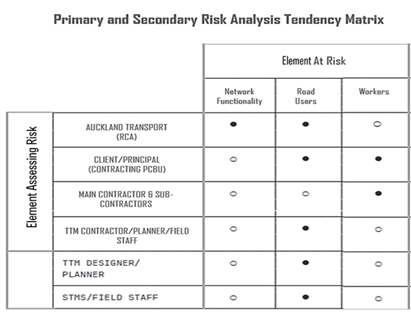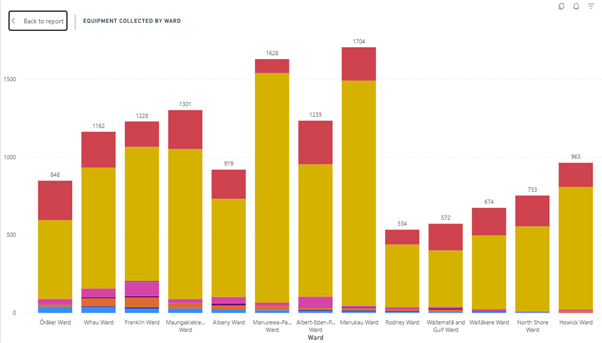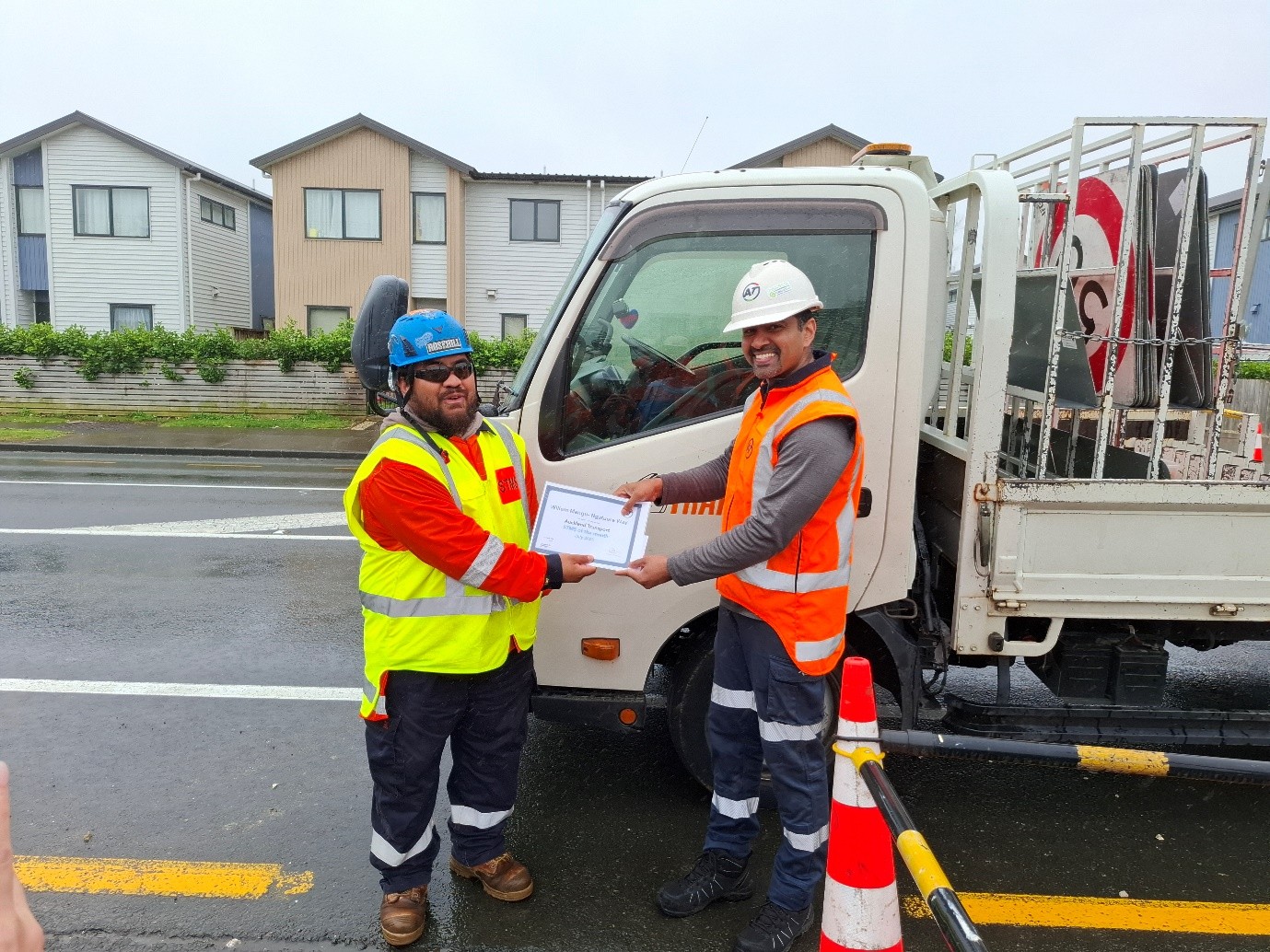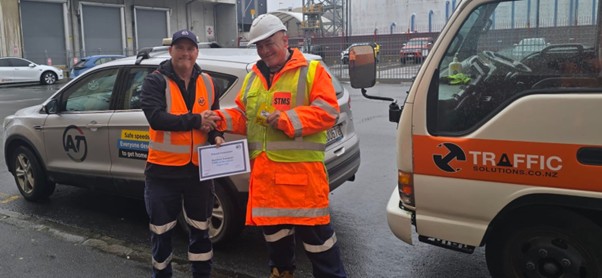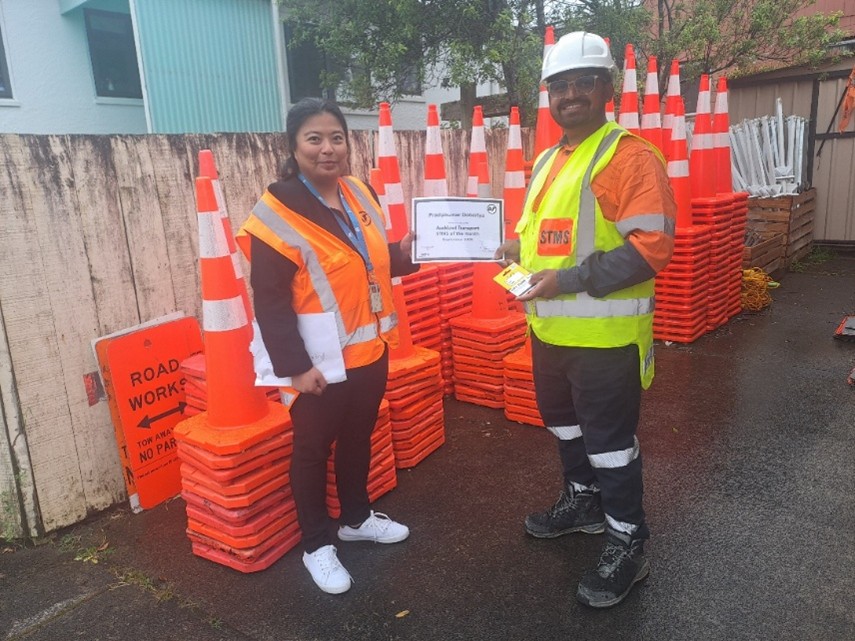Temporary Traffic Management Transformation Programme
Transforming the way we do temporary traffic management to support Tāmaki Makaurau's future
Publication of AT NZGTTM Guideline Documents
We have now published the first two of three, internal guideline documents. These are the -
- Network Access Coordination (NAC) Guidelines, and the
- Corridor Access Request (CAR) Processing Guidelines
The third document release is expected in early December. This is the
- NZGTTM Assurance Guidelines
The guidelines provide an overview of how AT intends to work to meet the new requirements. They are published on this page for industry review and feedback.
Refer to the AT Guideline Documents section of this page to download a copy.
To make comments or suggestions, please complete the survey forms at the bottom of this page by 5 December 2025.
Road Controlling Authorities (RCAs) across New Zealand, including Auckland Transport, are in the process of adopting the NZ Guide to Temporary Traffic Management (NZGTTM) published in April 2023. The guide replaces the Code of Practice to Temporary Traffic Management (CoPTTM).
The transition is to a risk-based approach that aims to ensure temporary traffic management (TTM) setups are as safe as possible for the specific risks at each site.
In July 2025 AT notified the industry that we will be transitioning to NZGTTM and assessing all new applications using the NZGTTM from 1 July 2026.
Programme Structure
The TTM Transformation Programme is a series of initiatives designed to support Auckland Transport's and the industry’s shift to risk based TTM. The changes aim to improve safety outcomes, optimise costs and minimise disruptions around worksites.
It is made up of two key focus areas:
- Industry Transition: AT is playing a leadership role in the industry transition to risk-based TTM. All relevant organisations need to understand their obligations under the risk-based approach, changing roles of others in the ecosystem, the skillset required, and the operating systems required.
This transition has three phases – initiate the transition, facilitate the transition, and sustain the new way. We are now in the facilitate the transition phase.
- Enabling AT: focuses on delivering and improving internal capabilities, ways of working and systems that enable Auckland Transport to:
- better influence how TTM is set up and managed at individual worksites
- better understand and manage the impacts of roadworks both at a local and regional level
- better fulfil its obligations as a major PCBU in Auckland
Our way forward is a collective effort that involves implementing innovative steps while continuously engaging with the industry, experts, and stakeholders.
Phase One - Initiate the transition
There are over 1,500 TTMPs active on any given weekday in Auckland, and the number of requests to access the road network continues to grow. We want to facilitate this growth while minimising disruption and cost (where possible), without compromising on safety.
From September 2023 as part of project initiation, we developed a new corridor application assessment process framework and completed consultation with leading industry partners. This work has delivered new processes and tools that are already making a difference, for example -
NZ Forward Works Viewer - Transport Disruptions Assessment
To allow contractors to self-assess the impact of a proposed worksite on the transport network and give AT the ability to identify highly disruptive works, we have developed a Transport Disruption Assessment tool. This tool is now incorporated into an interactive map on the NZ Forward Works Viewer.
The tool was successfully tested with contractors Fulton Hogan, Downer, and Liveable Street and was activated for the whole region in July 2025.
Network Access Coordination Forum (NAC)
To balance the disruption, cost, and risk involved in approving proposals for necessary road works, the NAC forum was launched. It reviews potentially disruptive projects identified through the NZ Forward Works Viewer and brings subject matter experts from operational teams together to authorise final temporary traffic management decisions.
In Warkworth during recent Watercare works, this strong partnership and early proactive planning helped significantly reduce disruption to residents, businesses, and traffic.
Phase Two - Facilitate the transition
Since early 2024 we have made significant strides towards reshaping how TTTM is delivered across the region, focusing on improving safety, reducing disruption, and supporting industry through change. Here are some initiatives we are working on -
Smarter disruption planning
To help with early identification of potentially disruptive projects and coordinate opportunities between multiple planned projects our planning tool Forward Works Viewer has been upgraded.
This is helping to reduce inconvenience for businesses and residents, minimise impact at high-traffic times and shortened the duration of disruptive works.
Disruptions during peak times
To support more reliable journey times Auckland’s busiest roads are now reserved for travelling Aucklanders during the busiest hours of the day. Lane closures during peak hours (7am-10 and 4pm-7pm on weekdays) are no longer approved, except where it is unsafe or more disruptive to prevent lane closure.
To keep customers informed all work sites must have signage explaining the works, who is doing the works and their duration.
Redundant TTM Equipment Clean-Up
To help clear the way for Aucklanders, improve road safety, and enhance the overall experience for all road users, a sweep of the urban network to remove redundant TTM equipment was completed in late October 2025.
This has resulted in the collection of over 15,000 pieces of unused equipment! Clearing unnecessary or unauthorised equipment helps maintain a safe and compliant network
The programme will continue, with a second sweep of the network planned. It is expected to start at the end of December 2025 and run through to April 2026.
Light Touch Audits on arterials
We want Aucklanders to have safe journeys through well-managed work zones, with fewer delays and disruptions leading to greater confidence in how roadworks are delivered.
To ensure TTM setups are safe, compliant, and minimise disruption for road users we are carrying out light-touch audits across all key arterial routes.
The audits aim to identify and resolve issues before they impact the public and we’ll complete 150 per month for the remainder of 2025.
What’s next?
Starting late October 2025, we will present a series of four industry and public online webinars. Feedback from the first webinar will help us develop content for subsequent webinars.
Date and time details and links to register will be published at the top of this page.
Stay in touch with us
The TTM Transformation Programme is working together with the industry to collectively navigate a successful transition to NZGTTM, and we are keen to hear from you.
If you have suggestions, reach out to the team at TTM@at.govt.nz
Stay up to date by subscribing to our mailing list newsletter at the top of the page.
To participate in discussions, ask questions or take surveys, register with your name and organisation details.


